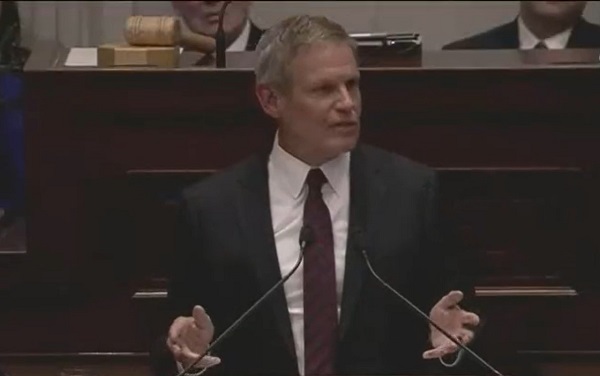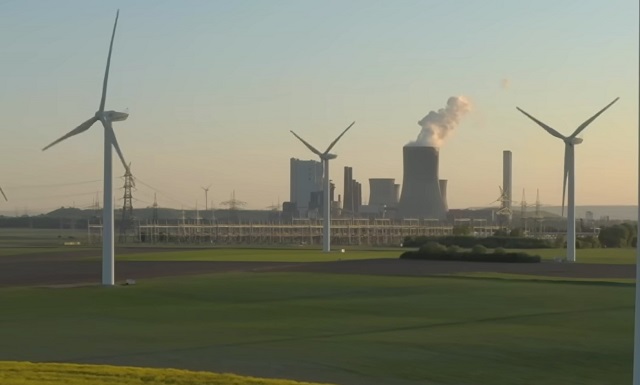International
British political commentator says Trudeau must go. World’s largest political youth organization horrified at Canada.

Canadians have always loved it when the rest of the world talks about our nation. Normally it’s because of an athlete or an artist who is on top of their game. Sometimes it’s our military accomplishments, or our peacekeeping leadership. Currently, Canada is making headlines for all the wrong reasons as the rest of the world struggles to understand what is happening in Canada to protestors who are clearly not violent (even if some find them incredibly annoying).
Best selling author Douglas Murray is a journalist with The Spectator, based in Britain.

Douglas Murray’s latest publication, The Madness of Crowds was a bestseller and ‘book of the year’ for The Times and The Sunday Times. Murray has also contributed to The Wall Street Journal, The Times, The Sunday Times, The Sun, The Evening Standard, and is a regular contributor to National Review. Murray founded the Centre for Social Cohesion, the first British think-tank studying extremism and terrorism.
This week, Douglas Murray was featured in this interview on SkyNews Australia.
Meanwhile in India, Tajinder Pal Singh Bagga, the National Secretary of the world’s largest youth political organization (called Bharatiya Janata Party Youth), has spoken out about the situation in Canada. The parent organization of the youth group, the Bharatiya Janata Party (BJP) is the World’s largest Political Party. Indian Prime Minister Narendra Modi belongs to this political party.
After seeing video from Canadian news organizations, Tajinder Pal Singh Bagga expressed horror at the treatment of peaceful protestors by the Canadian authorities.
I am not able to eat anything from last 24 hours after watching this video. how can @JustinTrudeau attack his own country people. Justin Converted beautiful Canada into Banana Republic. #TrudeauDictatorshipMustGo pic.twitter.com/WWwgMN4OsV
— Tajinder Pal Singh Bagga (@TajinderBagga) February 19, 2022
conflict
Over 200 Days Into War, Family Of American Hostage in Gaza Strives For Deal To Bring Son Home

 From the Daily Caller News Foundation
From the Daily Caller News Foundation
By JAKE SMITH
The parents of an American-Israeli hostage in Gaza are doing everything in their power to bring him back home since the Israel-Hamas war began more than 200 days ago, they told the Daily Caller News Foundation.
Edan Alexander, 20, is one of five American hostages currently being held by Hamas in the Gaza Strip. His parents, Adi and Yael, have been meeting with U.S. and Israeli officials to discuss how to get him home as international negotiators rush to reach a deal with Hamas that would see the release of hostages in exchange for a temporary ceasefire.
“They’ve been constantly optimistic for months now since the beginning of January, and I know that they keep negotiating, although Hamas, sometimes they’ve stopped negotiating,” Adi told the DCNF. “But right now it feels like it’s a perfect storm. And everything needs to come kind of together. Even if it’s a small humanitarian deal that can open the gate for the bigger deal, we need to start with that. Just to kind of strike the first small deal.”
There are approximately 128 hostages being held by Hamas, including Israeli and foreign civilians and Israel Defense Forces (IDF) soldiers.
The current proposal being negotiated would see a 40-day ceasefire in exchange for up to 33 hostages currently in Hamas captivity, with the possibility of a longer-term ceasefire should both sides uphold the deal, The Wall Street Journal reported on Friday. The following phases of the ceasefire could possibly extend up to a year.
Edan was born in Tel Aviv and brought to the United States before his first birthday, growing up mostly in New Jersey, Yael and Adi told the DCNF. He joined the IDF after graduating from high school and was serving at a small base near the border of Gaza when Hamas attacked Israel on Oct. 7, killing 1,200 people and kidnapping hundreds of others.
“Before 7 a.m., he’s calling me. And he was yelling, ‘Mom. It’s like a war here. I’m seeing terrible stuff. You cannot believe what I’m seeing,” Yael told the DCNF. “And then I’m like, you’ll be ok, you just protect yourself. You will be okay … I told him that I love him. And that’s it. This is the last time that I heard him.”
Israeli intelligence later contacted Yael and Adi and told them Edan had been among those kidnapped during the attacks, showing them bodycam footage recovered from Oct. 7 depicting him being arrested and taken by Hamas operatives, the parents told the DCNF.
Yael and Adi have since spent their time raising awareness about their son and the hostages in news conferences and rallies with the other hostage families.
“We met with President Biden twice, with Vice President Kamala Harris twice, and numerous times with [White House National Security Advisor] Jake Sullivan and with [CIA Director] Bill Burns,” Adi told the DCNF. Yael added that they have a weekly update call with the State Department.
Yael has also met with Israeli Prime Minister Benjamin Netanyahu, and the family speaks with Israeli officials when visiting the region. Conversations on the Israeli side are highly sensitive and guarded to ensure vital information isn’t leaked, they told the DCNF.
“We try to keep them private and yes, a lot of confidential things are being shared there. So it’s a little bit different,” Adi told the DCNF. “It’s also that the Israelis have to have bigger fish to fry.”
Though Hamas has previously rejected several proposals, there’s some hope on the U.S. and Israeli side that they’re closing in on reaching a deal, Yael and Adi told the DCNF. Sullivan told MSNBC during an interview on April 26 that there was “new momentum” in negotiations.
Having shared the common struggle of knowing their relatives are being held by a terrorist organization in currently one the most deadly places in the world has brought many of the families closer together, Yael and Adi told the DCNF.
“It’s unreal, all the stories and everything. All the families now we are like all together, and we’re like big family, these people that I never met before, and now I’m feeling the connection with them,” Yael told the DCNF. “I just want to spend time with them because they get it.”
Yael and Adi told the DCNF that, above all, they are looking forward to their son coming home so that the family can resume some sense of normalcy. Adi joked that they’d take a trip to the Bahamas and help Edan start applying for colleges.
“I don’t think I’m gonna stop holding him,” Yael said.
Economy
‘Gambling With The Grid’: New Data Highlights Achilles’ Heel Of One Of Biden’s Favorite Green Power Sources

 From the Daily Caller News Foundation
From the Daily Caller News Foundation
By NICK POPE
New government data shows that wind power generation fell in 2023 despite the addition of new capacity, a fact that energy sector experts told the Daily Caller News Foundation demonstrates its inherent flaw.
Wind generation fell by about 2.1% in 2023 relative to 2022 generation, despite the 6 gigawatts (GW) of wind power capacity that came online last year, according to data published Tuesday by the U.S. Energy Information Administration (EIA). That wind power output dropped despite new capacity coming online and the availability of government subsidies highlights its intermittency and the problems wind power could pose for grid reliability, energy sector experts told the DCNF.
The decrease in wind generation is the first drop on record with the EIA since the 1990s; the drop was not evenly distributed across all regions of the U.S., and slower wind speeds last year also contributed to the decline, according to EIA. The Biden administration wants to have the American power sector reach carbon neutrality by 2035, a goal that will require a significant shift away from natural gas- and coal-fired power toward wind, solar and other green sources.

A table depicting the decrease of wind power generation in 2023 relative to 2022. (Screenshot via U.S. Energy Information Administration)
“Relying on wind power to meet your peak electricity demands is gambling with the grid,” Isaac Orr, a policy fellow at the Center of the American Experiment who specializes in power grid-related analysis, told the DCNF. “Will the wind blow, or won’t it? This should be a moment where policymakers step back and consider the wisdom of heavily subsidizing intermittent generators and punishing reliable coal and gas plants with onerous regulations.”
Between 2016 and 2022, the wind industry received an estimated $18.6 billion worth of subsidies, about 10% of the total amount of subsidies extended to the energy sector by the U.S. government, according to an August 2023 EIA report. Wind power received more assistance from the government than nuclear power, coal or natural gas over the same period of time.
“This isn’t subsidies per kilowatt hour of generation. It’s raw subsidies. If it were per kilowatt hour of generation, the numbers would be even more extreme,” Paige Lambermont, a research fellow at the Competitive Enterprise Institute, told the DCNF. “This is a massive amount of money. It’s enough to dramatically alter energy investment decisions for the worse. We’re much more heavily subsidizing the sources that don’t provide a significant portion of our electricity than those that do.”
“Policy that just focuses on installed capacity, rather than the reliability of that capacity, fails to understand the real needs of the electrical grid,” Lambermont added. “This recent disparity illustra
Wind power’s performance was especially lackluster in the upper midwest, but Texas saw more wind generation in 2023 than it did in 2022, according to EIA. Wind generation in the first half of 2023 was about 14% lower than it was through the first six months of 2022, but generation was higher toward the end of 2023 than it was during the same period in 2022.
In 2023, about 60% of all electricity generated in the U.S. came from fossil fuels, while 10% came from wind power, according to EIA data. Beyond generous subsidies for preferred green energy sources, the Biden administration has also aggressively regulated fossil fuels and American power plants to advance its broad climate agenda.
Biden’s Climate Bill Boosted An Offshore Wind Giant, But His Economy Brought It To The Brink https://t.co/AF7SPT2FNu
— Daily Caller (@DailyCaller) November 3, 2023
The Environmental Protection Agency’s (EPA) landmark power plant rules finalized this month will threaten grid reliability if enacted, partially because the regulations are likely to incentivize operators to close plants rather than adopt the costly measures required for compliance, grid experts previously told the DCNF. At the same time that the Biden administration is effectively trying to shift power generation away from fossil fuels, it is also pursuing goals — such as substantially boosting electric vehicle adoption over the next decade and incentivizing construction of energy-intensive computer chip factories — that are driving up projected electricity demand in the future.
“The EIA data proves what we’ve always known about wind power: It is intermittent, unpredictable and unreliable,” David Blackmon, a 40-year veteran of the oil and gas industry who now writes and consults on the energy sector, told the DCNF. “Any power generation source whose output is wholly dependent on equally unpredictable weather conditions should never be presented by power companies and grid managers as safe replacements for abundant, cheap, dispatchable generation fueled with natural gas, coal or nuclear. This is a simple reality that people in charge of our power grids too often forget. Saying that no doubt hurts some people’s feelings, but nature really does not care about our feelings.”
Blackmon also pointed out that, aside from its intermittency, sluggish build-out of the transmission lines and related infrastructure poses a major problem for wind power.
“Wind power is worthless without accompanying transmission, yet the Biden administration continues to pour billions into unreliable wind while ignoring the growing crisis in the transmission sector,” Blackmon told the DCNF.
Another long-term issue that wind power, as well as solar power, faces is the need for a massive expansion in the amount of battery storage available to store and dispatch energy from intermittent sources as market conditions dictate. By some estimates, the U.S. will need about 85 times as much battery storage by 2050 relative to November 2023 in order to fully decarbonize the power grid, according to Alsym Energy, a battery company.
The White House and the Department of Energy did not respond to requests for comment.
-

 Economy2 days ago
Economy2 days ago‘Gambling With The Grid’: New Data Highlights Achilles’ Heel Of One Of Biden’s Favorite Green Power Sources
-

 conflict1 day ago
conflict1 day agoOver 200 Days Into War, Family Of American Hostage in Gaza Strives For Deal To Bring Son Home
-

 illegal immigration2 days ago
illegal immigration2 days agoBiden’s DOJ Threatens To Sue Another State For Enforcing Immigration Law
-

 ESG2 days ago
ESG2 days agoTennessee Taking Lead In Protecting Civil Rights And Free Enterprise—And Stopping Political Debanking
-

 Brownstone Institute23 hours ago
Brownstone Institute23 hours agoBook Burning Goes Digital
-

 Brownstone Institute12 hours ago
Brownstone Institute12 hours agoThe Predictable Wastes of Covid Relief
-

 Energy2 days ago
Energy2 days agoMarket Realities Are Throwing Wrench In Biden’s Green Energy Dreams
-

 Alberta3 hours ago
Alberta3 hours agoGame changer: Trans Mountain pipeline expansion complete and starting to flow Canada’s oil to the world







